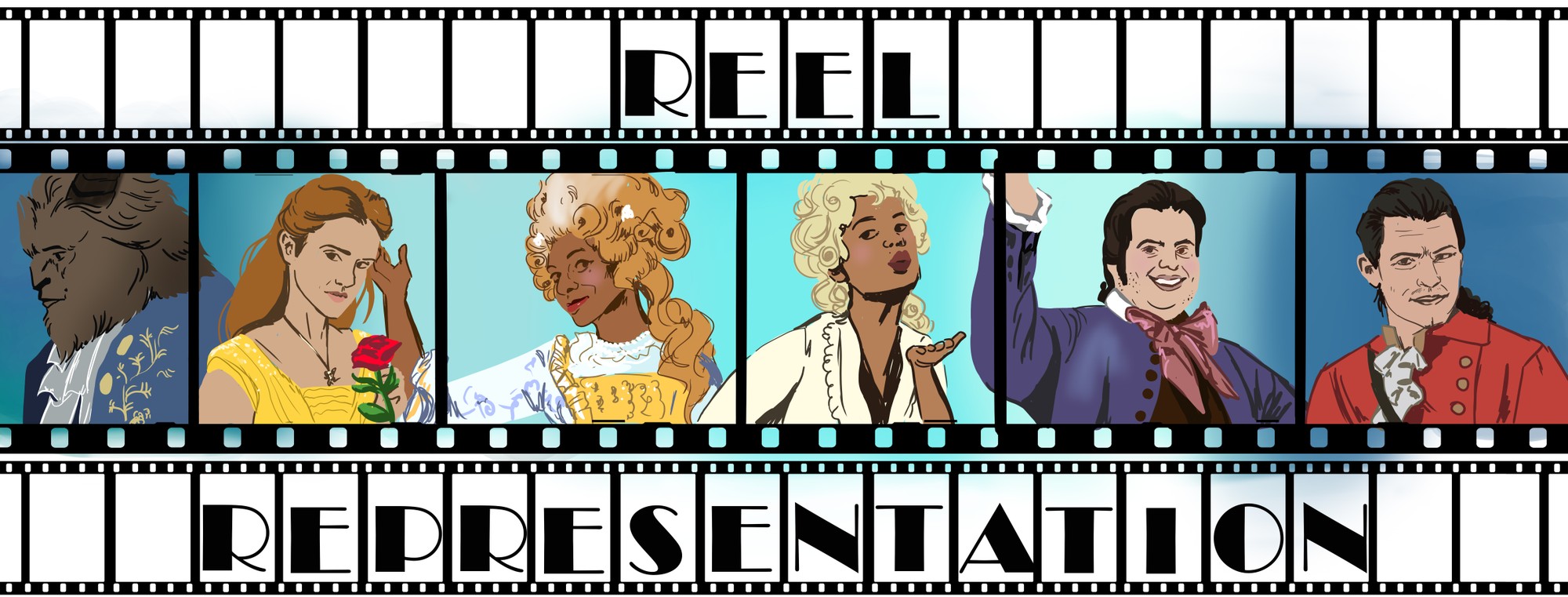Reel Representation: Diversity in ‘Beauty and the Beast’ is less radical than Disney claims

By Olivia Mazzucato
March 17, 2017 2:42 p.m.
Diversity in film and television came into the spotlight in 2016 with #OscarsSoWhite. A USC study in 2016 found only about a quarter of speaking characters belonged to nonwhite racial groups. In “Reel Representation,” columnist Olivia Mazzucato discusses different issues of race and representation in media as they relate to new movies and TV shows.
Hollywood rushing to pat itself on the back for diversity is a tale as old as time.
Jimmy Kimmel captured the sentiment at the 2016 Emmys when he said, “Here in Hollywood, the only thing we value more than diversity is congratulating ourselves for valuing diversity.” Shortly after, he congratulated the Emmys on their increased diversity.
This is a self-satisfied pattern into which Friday’s “Beauty and the Beast” adaptation falls.
In multiple interviews, the film’s director Bill Condon has pointed out two “historic” aspects of the film, claiming that the film features Disney’s first interracial kisses and the studio’s first gay character, LeFou.
The kisses Condon refers to take place between Maestro Cadenza (Stanley Tucci) and Madame Garderobe (Audra McDonald), followed by another kiss between Lumière (Ewan McGregor) and Plumette (Gugu Mbatha-Raw).
Condon is mistaken in his first claim – films like “Snow Dogs” and “Princess Diaries 2: Royal Engagement” feature interracial kisses.
What is more troubling is the emphasis in the film’s publicity campaigns on these seemingly progressive moments while ignoring the limited representation of people of color and the LGBTQ community.
Condon’s overstatements follow the dangerous trend of Hollywood’s self-congratulatory tone regarding diversity, which downplays how far the film industry still has to go.
The myth of the interracial kiss began in an interview with BBC, in which Condon said, “I didn’t give it a second thought, then at the preview, the (Disney) chairman told me that it was the first and second interracial kiss in a Disney movie. … That shocked me.”
Condon was right to be shocked, mainly because it wasn’t true. Buzzfeed and internet commenters quickly pointed out other interracial Disney kisses: Cuba Gooding Jr. and Joanna Bacalso in “Snow Dogs” and Julie Andrews and Hector Elizondo in “Princess Diaries 2: Royal Engagement.” Condon has not yet responded to the corrections.
What isn’t mentioned in this interview is the minor role the characters play. Lumière may lead the sentient household items that inhabit the castle, but Madame de Garderobe and Plumette play minor roles and are far less recognizable to fans of the original classic.
I’m happy that people of color were included in “Beauty and the Beast.” It’s important to recognize that film’s setting in a magical version of olden France means it’s not beholden to the same casting rules as a period film. There’s no historical continuity to keep intact because the film deals in fantasy.
While the film recognizes the ability of people of color to exist within the narrative, it relegates them to small, supporting roles. Yet Condon claims the cast is pioneering diversity.
Casting actors of color in supporting roles isn’t inherently unacceptable. However, it becomes problematic when minor moments are touted as championing diversity without looking at the way in which people of color function within the narrative.
Similarly, the film’s publicity focused on the introduction of Disney’s first gay character – LeFou. In an interview with Attitude, Condon said, “LeFou is somebody who on one day wants to be Gaston and on another day wants to kiss Gaston. … It is a nice, exclusively gay moment in a Disney movie.”
Again, I’m all for Disney including a gay character in a movie. The inclusion of the LGBTQ community in Disney’s narratives should have happened sooner and should happen more often. What makes me uncomfortable is the fact that Disney has chosen LeFou to be that first character.
In the original film, LeFou is a bumbling fool, seemingly infatuated with Gaston even if he isn’t explicitly gay. It’s not the most positive portrayal of the LGBTQ community and enforces some gay character tropes, especially as a sidekick who feels unrequited love for a cooler, straight character. Calling such a cliched character groundbreaking feels odd.
Whether of his own volition or at the urging of the studio, Condon emphasizes the two additions of racial and LGBTQ representation, framing the film as revolutionary. Diversity of any kind is positive and I do believe the film marks some sort of progress, just not the type of progress that Condon and Disney seem to think it does.
Holding up the moments as landmarks lessens the significance of true milestones and superficially lets Hollywood off the hook, making it seem like diversity is rapidly increasing when in reality, change is slow in Hollywood.



